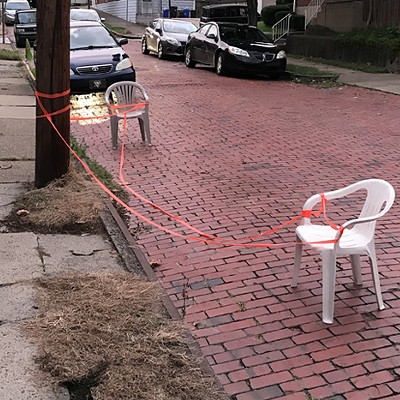An Italian immigrant myself, and an art historian, I take great pride in a cultural identity steeped in a history that stretches back through millennia in a homeland far away. I revel in the poetry of Dante, the sculpture of Michelangelo, the paintings of Caravaggio and Artemisia Gentileschi, and the polymath works of heroic men and women of vision from Leonardo Da Vinci to Rita Levi-Montalcini. I say heroic since they had the insight to respect and learn from history and the courage to confront the current conventional wisdom at considerable personal risk.
Christopher Columbus never made it into my roster of “Italian rock stars in history.” Growing up, I was more curious about Marco Polo’s voyage to China. There were no Columbus Day parades when I lived in Milan so I don’t have a sentimental attachment to his myth. Italy gave him a national holiday in 2004 but other than the Lega Navale, who created a Regata di Columbo as a sporting event, it is not a holiday that is widely or enthusiastically celebrated there. It has, however, been a beloved tradition in Pittsburgh as a symbol of Italian American identity and pride.
Which brings me to the ongoing controversy with the 30-foot Christopher Columbus statue in Schenley Park. The statue was part of a 50-year campaign by The Federation of the Sons of Columbus (ending in 1958) for a public landmark to honor the legacy of Pittsburgh’s people of Italian descent who flocked to the city in search of work. A lofty $100,000 was raised to commission it from the renowned Italian sculptor Frank Vittor. At that time, it was the second-largest statue of Columbus in the United States. Last week, Pittsburgh’s Art Commission took up a debate over a 14,000-signature petition for its removal.
Controversies over public monuments are not new. Statues stand patiently for decades or centuries, tasked with the representation of the hopes and ideals we would like them to preserve. But eventually, they turn the table on us and confront us — palpably, and often painfully — with important lessons in history. I often think of monuments as time capsules that explode on us at critical junctures in our history. When we learn that a historic figure we immortalized in stone or bronze turns out to be of questionable character or deeds we experience anger, disappointment, and ask others to support our urgency to dethrone it. The response is rarely one of unanimous support. Passionate defenses and near-desperate pleas to “preserve history” also ensue. This is especially the case with Columbus statues around the country: “It’s a symbol of Italian American Pride!” or “The point of Christopher Columbus was exploration!” In this tense climate, it is no wonder that these statues have been dropping like flies, getting their heads chopped off or redressed in humiliating paint splatter. We like to think of ourselves as moral citizens, but we do not know what to do when history confronts us. We instead, take a sledgehammer to statues.
Christopher Columbus did irreparable harm to indigenous people and now, all Americans must reckon with that history. Columbus and the Spanish settlers who followed him were responsible for the beginning of genocide in the “New world.” The decimation of the Taíno population on Hispaniola (now Haiti) was the first of many tragedies that took place after Columbus’s anchored his ship near modern Cap-Haïtien on Christmas Eve 1492. There were anywhere from several hundred thousand to over a million living on the island at first contact. Within 25 years of Columbus’ arrival, most of the Taíno had died from enslavement, massacre, and disease.
Many wish Italian Americans had chosen a more upstanding historical hero to parade as a symbol of Italian pride and heritage. Columbus shares none of the patron-saintly virtues that St. Patrick offers the Irish or the silly fun that the mythical conqueror José Gasparilla provides Floridians in Tampa (there is no evidence that he truly existed). A far finer example of courage and humanitarian efforts might have been Mother Frances Xavier Cabrini who emigrated to the United States in 1889. Her devotion to the cause of the oppressed, in America and elsewhere, resulted in her proclamation as a saint in the Catholic Church. The affiliation with the memory of Christopher Columbus is not working out so well for us, is it? This one is dredging painful memories for generations of indigenous people.
The myth of Columbus as an ideal citizen was largely propagated by the Knights of Columbus starting in the 1880s (an Irish-Catholic group which grew to have a heavy Italian membership). It was intended as a rebuke to Anglo-Saxon Protestant leaders, who upheld the explorer (a Genovese who had worked for Catholic Spain) as an American hero, yet simultaneously sought to marginalize recent Catholic immigrants. In 1892, President Benjamin Harrison proclaimed Columbus Day, simply as a one-time national celebration which apparently retained long-time appeal. The proclamation was made in the wake of a bloody New Orleans lynching that took the lives of 11 innocent Italian immigrants. The holiday was part of a broader attempt to quiet outrage among Italian-Americans, and the diplomatic blow up over the murders that brought Italy and the United States virtually to the brink of war. President Roosevelt made it an official federal holiday in 1937.
Because Italians immigrants faced significant discrimination and prejudice in the first half of the 20th century, some, like Professor Kirk Savage in his NPR interview with Kevin Gavin last week, see the holiday and the commissioning of Columbus statues as a ticket to “whiteness”: a process through which Italian-Americans were fully ratified as “white” during the 20th century. I disagree. Their rationale was certainly steeped in myth and allowed Italian-Americans to write a laudatory portrait of themselves into civic records. But the vision they had for themselves in America was not one of lining up to buy tickets into the bigoted whiteness they found in Protestant America. Italians labored tirelessly with other immigrant groups in campaigns that overturned racist immigration restrictions in 1965 and helped to pave the way for a more democratic and socially inclusive America. Dusting off this centuries-old symbol of Columbus might even have been an attempt to reclaim one of many heroes temporarily appropriated by other cultures. They did the same with Leonardo da Vinci in the years after the Risorgimentowhen France claimed the great artist as one of their own.
Italians sought recognition, for sure, but scholars like Thomas Guglielmo (author of White on Arrival) have challenged the tenet that Italians had to make great effort to be accepted as “white.” Italians were marked “white” on their naturalization papers upon arrival in the U.S. This granted them privileges by American institutions such as the courts, the unions, and the housing market that African Americans and immigrant Asians could only dream of in the first part of the twentieth century. Ethnic discrimination toward the Italian communities continued — they were often labeled as racially undesirable — but there is no basis I can find for an Italian immigrant role in forging a white supremacy. Italians could marry across ethnic lines, move into better neighborhoods when they had the economic resources to do so, and walk down important power corridors in American politics. It is, therefore, difficult for me to see aspirations of white supremacy in a Columbus statue when Italians were discriminated against but not systematically disadvantaged.
Italians were much more interested in redefining the parameters of whiteness and constructing their own identity. This identity was steeped in Italianità: a racial and ethnic consciousness that remains central to many Italians’ image of themselves to this day. When faced with episodes that could have heightened their whiteness (as in political attempts to rally the “white” vote) Italians clung, instead, to a separate racial identity. They also labored tirelessly with other immigrant groups in campaigns that overturned racist immigration restrictions in 1965 and helped to pave the way for a more democratic and socially inclusive America.
Dusting off the centuries-old symbol of Columbus might even have been an attempt to reclaim one of many heroes temporarily appropriated by other cultures. They did the same with Leonardo da Vinci in the years after the Risorgimento when France claimed the great artist as one of their own. To any removal recommendations, I would add a “but not just yet.” People will quickly forget a buried statue. We should, instead, embrace the invitation before us to sort out important historical questions — including questions that challenge myths of identity — and to build a new shared history that both Italian Americans and Indigenous Americans can be proud of. The word "memorial" comes from the Latin word monumentum which calls us to “remember” and “to think.” No statue should be an obstacle to peaceful coexistence. Pittsburgh is, after all, a city of bridges and connections.
Example might also be taken from the Italian town of Bolzano. My youngest son, who is studying diplomacy and international relations at his university, brought it to my attention. Residents had had enough of the massive bas-relief of Benito Mussolini on horseback bearing the slogan “Credere Obbedire, Combattere” (Believe, Obey, Combat) that appeared on the fascist-era building that is now used as a municipal office. Although Italy’s fascist past is officially condemned, the monument stood untouched until a directive from the national government formally required the town’s administration to do something about it. In the face of petitions to “take it down” and “preserve,” the town opted, instead, to avoid the binary altogether and launch a public bid, soliciting ideas for how to “defuse and contextualize” the politically charged frieze. Almost 500 proposals were submitted by artists, architects, historians, and more. These were reviewed by a jury composed of local residents, including a history professor, museum curator, architect, artist, and journalist. Their recommendations were brought to the municipal council where a final vote was taken. The proceedings were documented online and open to public scrutiny. The winning proposal was simple and powerful: a LED-illuminated inscription of a quote by the German Jewish philosopher Hannah Arendt that reads: “Nobody has the right to obey.” An intimate and very emotional celebration with music, poetry, and even a moment of silence marked the public unveiling of the installation. I can see similar gatherings around our Columbus statue too. What we do with it after that (keep or remove) will not sting as much.
— Dr. Patrizia Costa, Highland Park
Editor's note: The City of Pittsburgh's Art Commission will hold a Special Hearing and public comment period on the Christopher Columbus statue at 5:30 p.m. on Thu., Sept. 17. More info can be found here: Special Hearing press release















